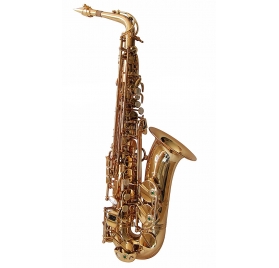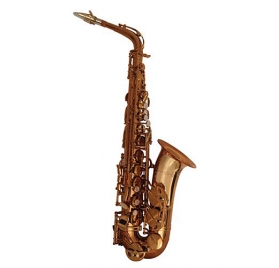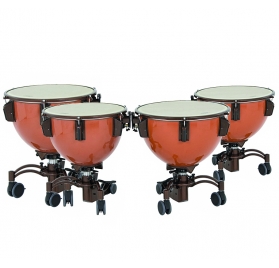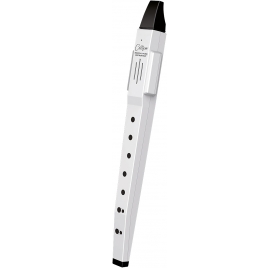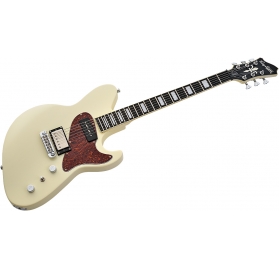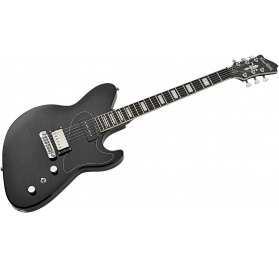Since many years there have been attempts by different guitar manufacturers to build guitars out of thermo treated woods. Up until now, however, only heat-treated guitar tops have been used. Reinhardt GmbH has now developed a process within the framework of a research project that makes it possible to build a complete guitar from thermo-optimised wood. The project was supported by the Federal Ministry of Economics.
"Well, during the construction I didn't really believe that it would work, to be honest, and was then really surprised by the result", says Andreas Dill. I met the guitar maker in his shop and workshop in Weingarten on Lake Constance. He had tried to build guitars from thermally modified wood before, and in the end he always failed because of the bending of the sides. That's why he didn't really have high hopes when he dared to build a prototype with the first modified wood samples - and yet it worked out. It is indeed one of the biggest challenges the project faces today. To modify wood thermally is in some ways an intervention of nature.
During the process, the wood is exposed to a minimum heat of 150 ° C for several hours. This involves various chemical conversion processes that dry out the wood, making it very brittle. So the big secret is to find the exact ratio of heat and duration in order to achieve the optimum degree of modification for each type of wood. Due to the modified cell structure, the modified wood also absorbs hardly any water. To bend the frames, Andreas Dill had to soak the wood in water. Today he is sitting in his studio in Weingarten and marvelling at the first prototype. Not much is left of the initial skepticism. On the contrary, Andreas Dill is surprised by the really good tonal and optical result.
The fact that this was possible is certainly also due to the fact that for the first time science is participating in the development of such a procedure for guitar building. The wood used by Andreas Dill comes from the University for Sustainable Development in Eberswalde. There, a team of scientists under the direction of Prof. Dr. Alexander Pfriem has been working for the last three years on a scientifically proven method for the thermal modification of tonewood as part of a research project. The aim was to use scientific methods to find out how different types of wood need to be optimized so that they can be used for guitar building. "These are now quasi the recipes with which we think we have found a quite good result, an optimized result for the improvement of woods for musical instrument making", explains Prof. Dr. Pfriem. The aim is to bring the whole thing into a closed system, so that guitar makers can modify their woods themselves according to the findings of the research work.

This is exactly what science is important for. Despite all theoretical objectivity, scientific facts drastically reduce the error rates. At the same time, criteria can be defined that are based on clear measured values. On the basis of numerous sound analyses (modal analyses), for example, the scientists have examined the vibration behaviour of native and modified wood and found that with the right procedure, acoustic properties relevant to guitar building can be improved in all wood variants. One example of such a measurement is the resonance quality factor, which is made up of the elastic stiffness and density of wood. High elastic stiffness and low density mean good resonance properties for the wood. The team in Eberswalde has therefore succeeded in proving that native wood species can be thermally modified in such a way that they can be used for all components of a guitar - using scientific methods and according to scientific standards.
Back to the south of the Republic. The research project was initiated by Gunther Reinhardt, who is now the third member of the alliance. The owner of Reinhardt GmbH in Tübingen has been working for more than 20 years on the question of how far native wood types can be optimised so that they can also be used for guitar building. "Using woods that we have here and achieving a similar sound quality as is currently achieved with tropical woods has always appealed to me," says Gunther Reinhardt. The reason for this was a Finnish scientist who once told him that under an electron microscope, thermally optimized woods look like the wood of a Stradivari violin. "And that was such a crystallization point for me. Because having a wood that Stradivari would have felled in order to build guitars from it would have been the dream of every guitar maker, so to speak," says Gunther Reinhardt.
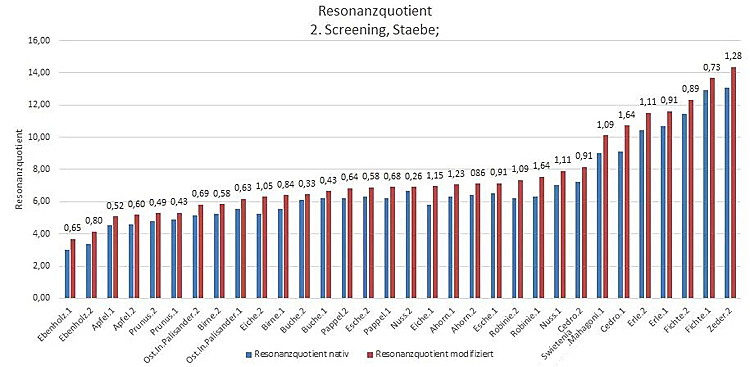
Added to this is the interest in sustainable topics. The use of tropical woods has a long tradition in guitar building. The big goal is therefore to use native woods in order to achieve a sound similar to that of guitars made of species such as mahogany or rosewood, so that in the future it will be possible to do without tropical woods. However, this method is still in its infancy. Guitar builders who have used thermally modified woods up to now have done so almost exclusively with guitar tops, and even then mostly only for optical reasons. The fact that an entire guitar is built from these woods and that the sound of the guitar meets all the requirements can be regarded as pioneering work. It is clear that thermally modified tonewood will not displace the beloved tropical wood from the market. Nevertheless, the increasing trade restrictions (CITES) of various tropical woods show that sooner or later the guitar industry will also have to think about sensible alternatives. With rECOtimber, this trio of science, handicraft and wholesale create a good and important contribution to the industry.

.
.





















